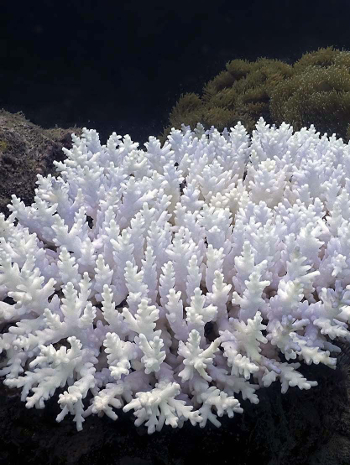Bleach alert ahead of heat peak
 Far North Queensland authorities are struggling through a perfect storm of reef destruction.
Far North Queensland authorities are struggling through a perfect storm of reef destruction.
The worst coral bleaching in almost 15 years has hit Lizard Island, with estimates that about 80 per cent of coral on the reef around the island is showing signs of bleaching.
A growing number of reports of coral bleaching across the Great Barrier Reef have now prompted authorities and researchers to step up in-water field surveys and monitoring.
Lizard Island, located about 220km off Cairns, has fallen victim to sea temperatures up to 1.5°C above the average for this time of year, and will not peak for several weeks.
Bleaching has affected almost all varieties of coral but the branching, bushy and plate corals are the worst-affected.
Patchy bleaching has been detected on several reefs, mainly in shallow areas where corals are frequently exposed to high levels of sunlight.
Coral bleaching occurs when corals expel the fascinating algae called zoonxanthellae that live inside them. The sensitive little algae fulfil a number of vital functions, as well as giving the coral its colour.
Australian Museum Lizard Island Research Station director Dr Anne Hoggett says the level of bleaching is similar to the peaks of 2002.
“We’ve got utterly perfect weather for bleaching here at the moment,” Dr Hogget has told News Corp.
The researchers warn that the current El Nino weather patterns match those that caused huge fields of coral bleaching across the Reef in 1998.
“We’re quite close to the time of the year where the temperatures will start to peak and then drop,” ARC Centre of Excellence for Coral Reef Studies director Professor Terry Hughes said.
“That should be the end of the bleaching, so it really comes down to what the local weather will look like in the next two weeks, whether bleaching will happen at a particular place or not.
“So we’re sort of down to the wire in terms of the summer maximum temperature upon us.”








 Print
Print